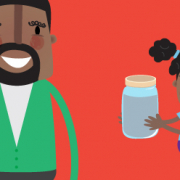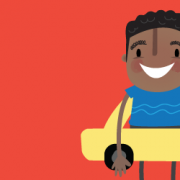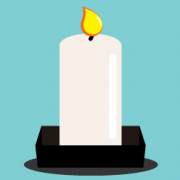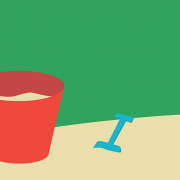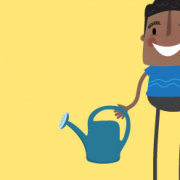Heart check
You will need six clear glasses or cups, a plastic tablecloth to protect your work surface, a white cloth or paper towel, food colouring in red, yellow, blue, green, and brown or black, a tablespoon and some bleach.
- Prepare by putting one tablespoon of water in five of the glasses.
- Add enough food colouring to each glass to create an intense colour – a different colour in each glass.
- Add water to the sixth glass until it’s about one-third full.
Begin the teaching component of your object lesson as follows:
- Lift up the cup of red water and explain to your kids that the red water represents anger. Add, “When we speak in anger, it often hurts others.”
- Now use the tablespoon to spoon a little of the red water onto the towel. (Leave the rest of the red water in the cup for later.)
- Explain that the coloured stain left on the towel represents the pain that speaking angrily can cause.
- Continue adding dye stains to the cloth with the following explanations:
the yellow dye represents teasing – it leaves a stain that represents sadness
the blue dye represents being quick to point out someone else’s faults or mistakes, or correcting someone harshly – the blue stain represents a bruised heart
the brown or black dye represents prejudice – the stain represents hurt feelings over unfairness and being unfairly judged
the green dye represents envy – the stain represents the hurt of feeling the anger and resentment of others.
- Next, have your children observe all the stains from the coloured water. Remind your children, “When we have intense emotions boiling around inside us, it’s easy to say hurtful things without considering the feelings of others.”
- Take the cup of clear water and pour some on the white cloth, then point out that the pure water left no stain.
- Explain that the clear water represents someone who has a pure heart. Before this person spoke, they asked God to check their attitude to make sure it was right before they said anything.
- Agree together to adopt “Make no stain, cause no pain” as your family motto for the next little while.
- Now read Acts 15:8-9. Continue your lesson by saying, “If we are feeling angry, critical, sad, troubled, jealous or upset and we are tempted to speak unkindly, we can ask God to send His Holy Spirit to clean our hearts. God will take the bad attitude right out of us, if we ask Him to. Just like human doctors love to help people get better when they are sick, God loves to take sin out of our hearts.”
- To illustrate your point, add a tablespoon of bleach to each cup of coloured water and watch as it makes all the dyed water look pure and clear. It’s fascinating! (Do impress on your children, however, that the water is not safe to drink.)
- In closing, assure your children that praying about a bad attitude makes God happy! He loves it when His children come to him for help! Explain that God already knows what is in our hearts and He even knows what we are going to say before we say it! You can end with a simple prayer as follows:
Dear God, please help us remember to pray to You when we have bad thoughts and sinful attitudes, so You can take them out of our hearts and put good attitudes there instead. We want good things to overflow from our hearts so that kind words come out of our mouths. Amen.
Relevant Scripture
Acts 15:8-9 “And God, who knows the heart, bore witness to them, by giving them the Holy Spirit just as He did to us, and He made no distinction between us and them, having cleansed their hearts by faith.
”
Psalm 139:4 “Even before a word is on my tongue, behold, O Lord, you know it altogether.
”
Psalm 141:3 “Set a guard, O Lord, over my mouth; keep watch over the door of my lips!
”
Proverbs 22:11 “He who loves purity of heart, and whose speech is gracious, will have the king as his friend.
”
Matthew 12:34-37 “You brood of vipers! How can you speak good, when you are evil? For out of the abundance of the heart the mouth speaks. The good person out of his good treasure brings forth good, and the evil person out of his evil treasure brings forth evil. I tell you, on the day of judgment people will give account for every careless word they speak, for by your words you will be justified, and by your words you will be condemned.
”
